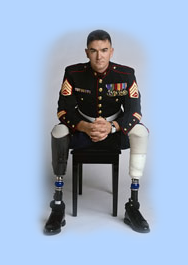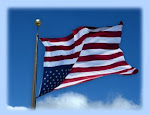Proposal
Department of Defense Brain Injury Rescue & Rehabilitation Project (DoD-BIRR)
Experimental Study of Hyperbaric Oxygen Therapy in the Treatment of Residual Effects of Traumatic Brain Injury in United States Military Iraqi War Veterans
Paul G. Harch, M.D.
LSU School of Medicine, New Orleans
INTRODUCTION: The current military conflict in Iraq has resulted in a very high proportion of traumatic brain injuries due to body armor and the types of munitions that are generating casualties. Statistics suggest as high as 80% of injured surviving veterans suffer from the residual neurological and cognitive effects of traumatic brain injury. There is no accept
February 12, 2007ed effective treatment for these chronic effects. In the past 30 years an increasing body of scientific literature has suggested that this condition is treatable with low pressure hyperbaric oxygen therapy (HBOT). Recently, HBOT has been shown to improve cognitive function and improve vascular density in an animal model of chronic traumatic brain injury (Harch, 2001; manuscript submitted). This is the first such demonstration in the history of science and reinforces the clinical reports of effectiveness of HBOT.
PURPOSE: To conduct a rigorous study of HBOT in United States Military Iraqi war veterans with chronic traumatic brain injury and test the ability of HBOT to improve neurological, cognitive, emotional, and behavioral function.
DESIGN: Multi-center randomized prospective controlled crossover trial. All veterans enrolled in the study will receive both HBOT and participate as a control subject.
METHODS: The study will recruit 400 U.S. military Iraqi war veterans who have sustained a remote traumatic brain injury and are having cognitive and neurological dysfunction 12 months after their injury. Subjects will be identified by their VA or private physicians, enrolled in the study, and complete a neuropsychological test battery. If the neuropsychological test battery is positive for cognitive deficits the patient will undergo a neurological physical exam and randomization to HBOT or no HBOT. All veterans will complete a series of Quality of Life questionnaires and discontinue any other therapies. A subset of the veterans will also undergo the sequence of SPECT brain blood flow imaging, followed by a single HBOT or sham pressurization and then repeat SPECT at centers equipped to do SPECT. The HBOT group will receive 1.5ATA/60 minute HBOT’s twice/day, 5 days/week for 40 treatments. The control group will not receive HBOT. One month after the 40th HBOT both the HBOT and control groups will have a repeat neuropsychological test battery, answer the QOL questionnaires, and the subset with SPECT will have repeat SPECT brain blood flow imaging.
The two groups will then crossover: the HBOT group will become the control group and the control group will receive HBOT. One month after the 40th HBOT to the previous control group both groups will have repeat neuropsychological testing, QOL questionnaires, and the SPECT subset will have repeat SPECT brain imaging. Both groups will be followed for an additional six months at which time neuropsychological function, QOL, and return to work or previous level of function will be assessed. In addition, the SPECT subset will receive a final SPECT brain scan.
ANALYSIS: The neuropsychological and QOL data will be statistically analyzed by comparing pre/post test score differences for individuals as they complete each arm of the study. In addition, HBOT and control groups will be compared. SPECT brain imaging will be analyzed by standard methods, including region analysis and statistical parametric mapping. Study results will be published and announced.
COST/TIME ESTIMATES: Each veteran will take one year to complete the study. Total cost is approximately $25,000/veteran.

























No comments:
Post a Comment